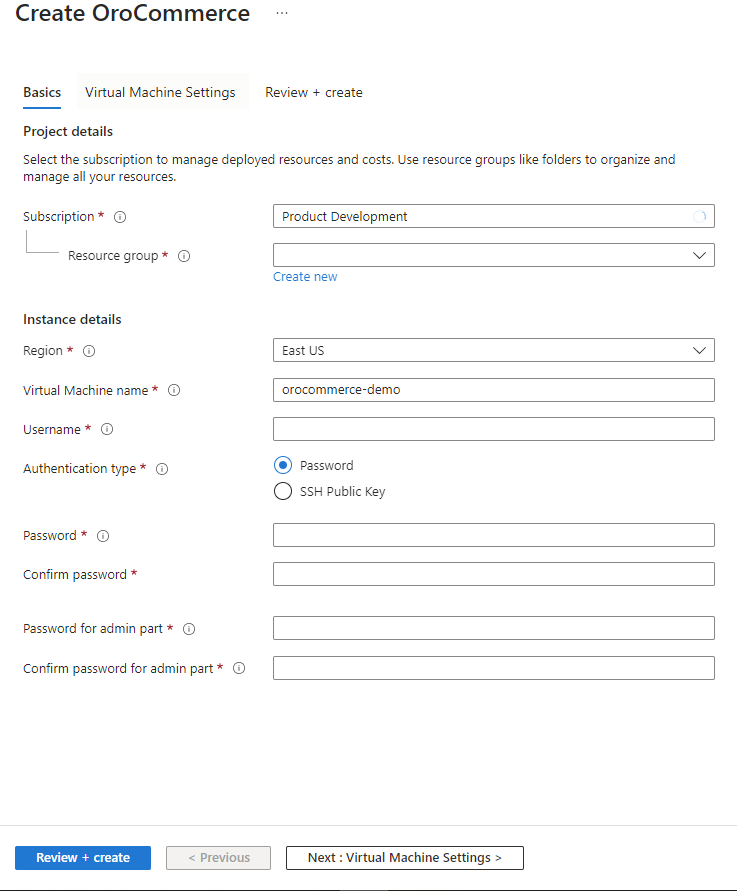Important
You are browsing upcoming documentation for version 7.0 of OroCommerce, scheduled for release in 2026. Read the documentation for the latest LTS version to get up-to-date information.
See our Release Process documentation for more information on the currently supported and upcoming releases.
Azure Cloud Platform
Azure Marketplace enables you to deploy pre-configured demo instances of the latest LTS releases of OroCommerce Community Edition with demo data.
To proceed with the installation, make sure you have registered with Azure marketplace and have a valid Azure portal account.
Deploy the Solution
To deploy the solution, follow the steps below:
Navigate to Azure Marketplace and search for OroCommerce VM in the search bar.

Once you select the application type to deploy, click GET IT NOW under the application logo on your left.
In the pop-up dialog, select the software plan with demo data. This provides all the necessary information for you to test the application, such as a preconfigured list of customers, products, submitted orders, quotes, the structured master, and web catalogs.
Click Continue.
You are redirected to Azure Portal to complete the installation. At this point, you are asked to log into Azure Portal if you have not already done so.
Once again, select the type of application to deploy.
Click Create.
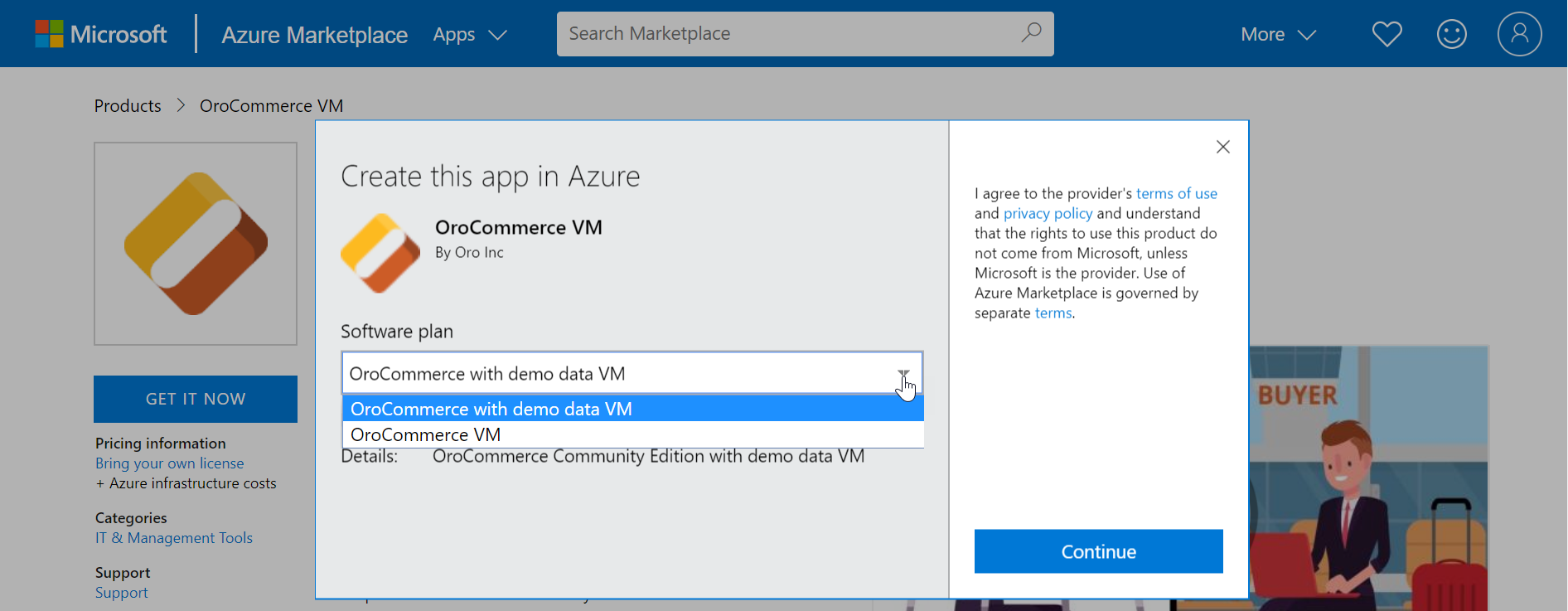
Complete the required fields in the Basics tab:
Subscription - Select your subscription type.
Resource Group - Create a new resource group, or select an existing one.
A resource group is a container that holds related resources for an Azure solution. Resource group names only allow alphanumeric characters, periods, underscores, hyphens, and parentheses and cannot end in a period.
Region - Choose your region, e.g., (US) East US
Virtual Machine Name - Provide a virtual machine name.
Virtual machines in Azure have two distinct names: a virtual machine name used as the Azure resource identifier and the guest hostname. When you create a VM in the portal, the same name is used for both the virtual machine and host names. You cannot change the virtual machine name after the VM is created. You can change the hostname when you log into the virtual machine.
Username - Provide a username for the virtual machine.
Authentication type - Choose whether to use a password or SSH public key for authentication.
For password, complete fields Username, Password, Confirm password
For SSH public key, complete fields Username and SSH public key
Password - Provide a password to the virtual machine.
Confirm password - Confirm the password to the virtual machine.
Password for admin part - Provide a password to log in to the web interface.
Confirm password for admin part - Confirm the password for the web interface.
Click Virtual Machine Settings. The fields are predefined with demo data.

Click Review+Create to check the provided information. You should see Running Final Validation, followed by Validation Passed.
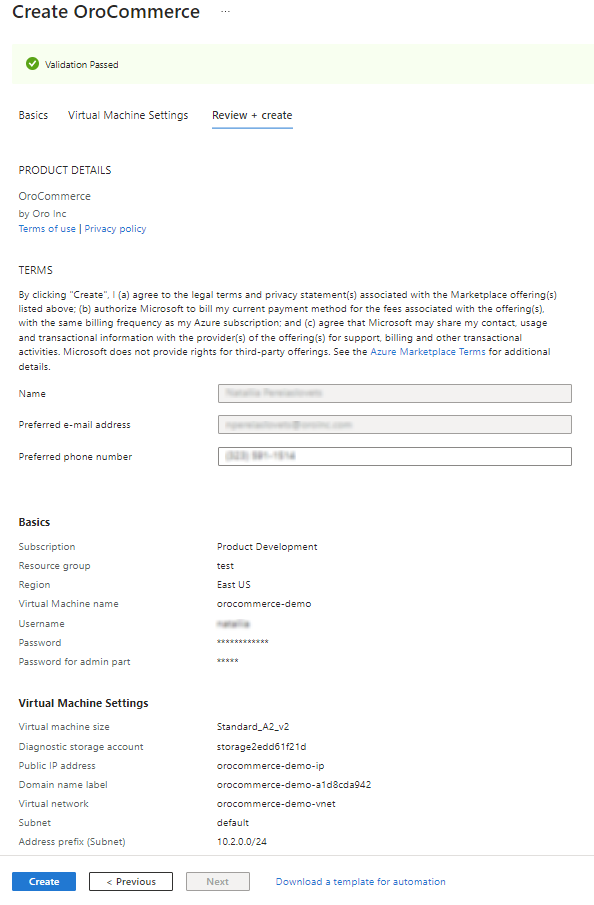
Click Create at the bottom.
Make sure the deployment is completed successfully.

Click Go to resource group. DNS is already configured.

Paste the DNS into the address bar of a new browser window, and add /admin to the URL (e.g., http://<DNSprefix>.cloudapp.azure.com/admin).
The Oro application interface should now be displayed.
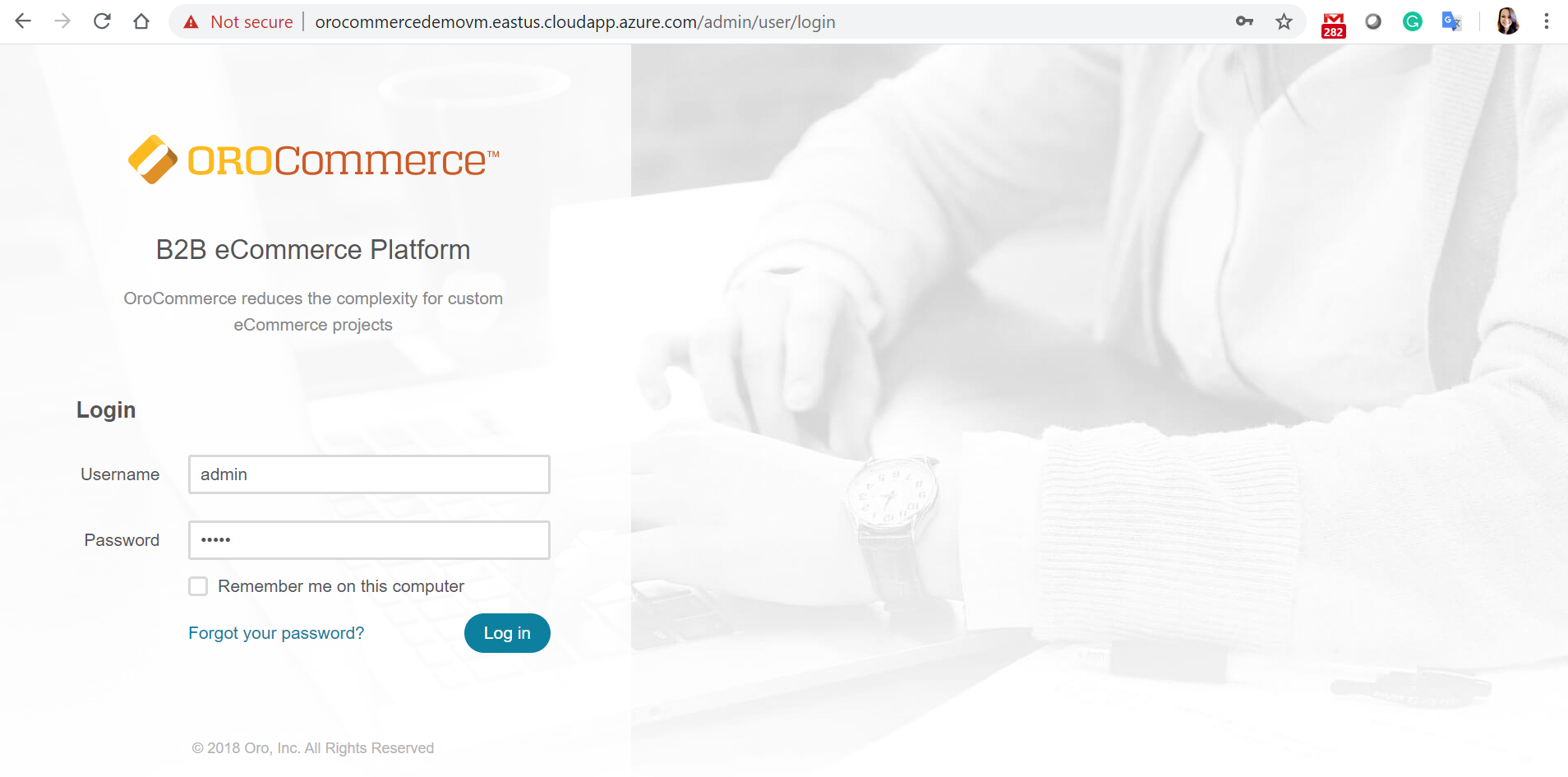
Important
OroCommerce VM Demo Data: Use AmandaRCole@example.org both as your login and password to access the storefront (http://<DNSprefix>.cloudapp.azure.com). To access the back-office of the application (http://<DNSprefix>.cloudapp.azure.com/admin/admin), use admin as login and password. To access the application via SSH, specify your username and password or a public key, and restart services (systemctl restart oro*).
Configure Application URL
For the demo application to work correctly, you need to configure the application URL, Secure URL, and URL.
Navigate to System Configuration > General Setup > Application Settings in the application back-office, and provide the Application URL (e.g., http://<DNSprefix>.cloudapp.azure.com, or a different domain).
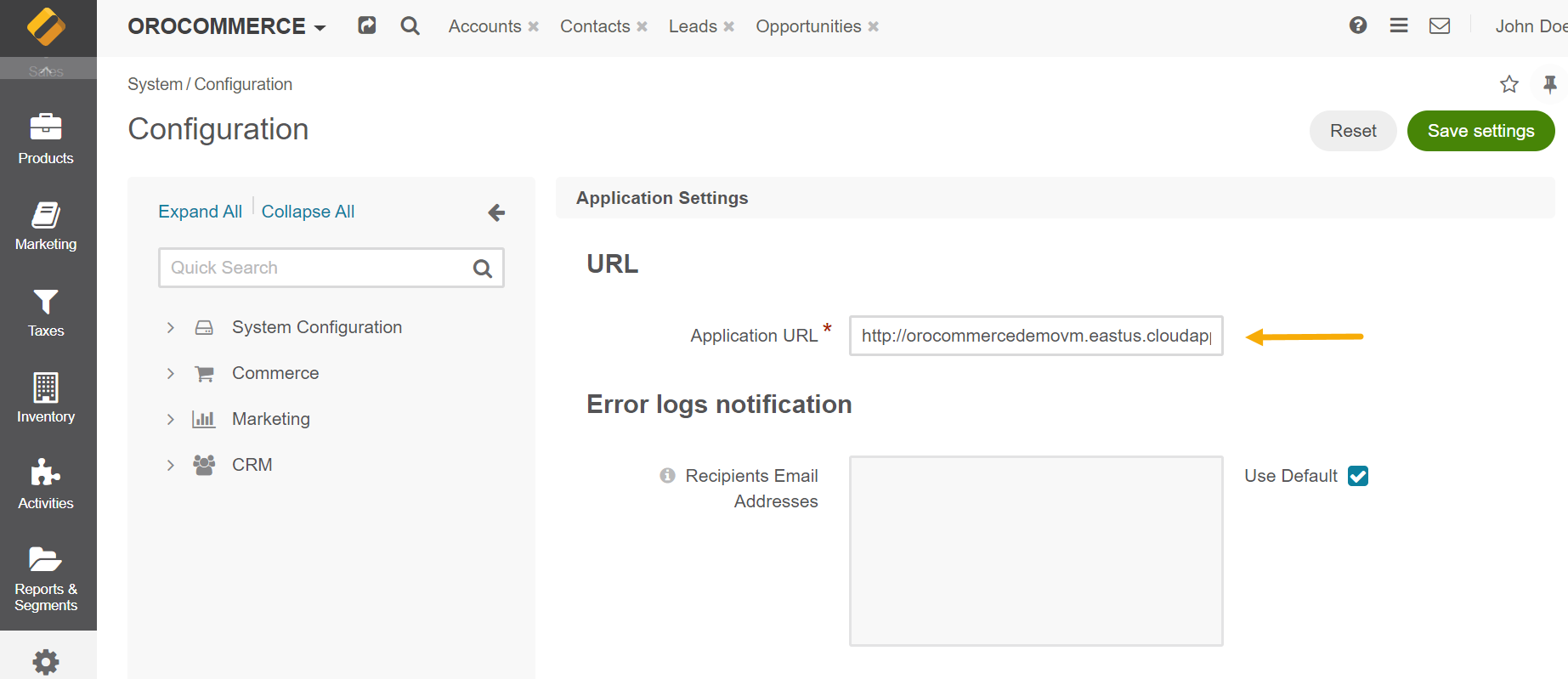
(For OroCommerce only) Navigate to System Configuration > Websites > Routing in the application back-office, and provide Secure URL and URL.
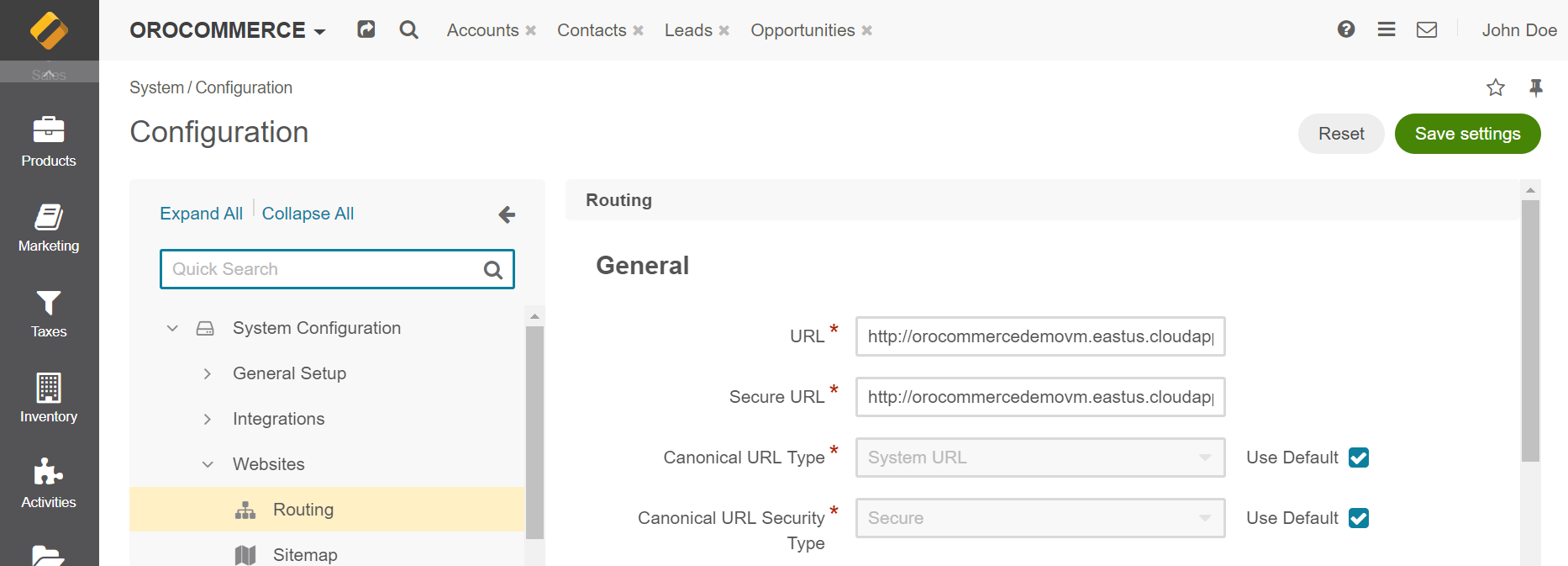
Return to the Azure Portal, and click Restart to reboot the virtual machine.

Follow the restart progress in the notification bar on your top right.
Copy and paste the DNS into the address bar of a new browser window and press Enter.
The storefront should now be displayed if you have deployed the OroCommerce application.
Note
Due to Azure blocking port 25, we recommend configuring SMTP settings once you install the application if you would like to send messages from the Oro application you have deployed.
